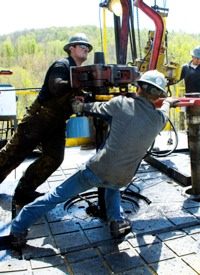
In its report MisMeasuring Methane: Estimating Greenhouse Gas Emissions from Upstream Natural Gas Development, the independent energy analysis firm IHS Cambridge Energy Research Associates (CERA) reveals, "EPA's current methodology for estimating gas field methane emissions is not based on methane emitted during well completions, but paradoxically is based on a data sample of methane captured during well completions." (Emphasis in original.)
The agency's meager "data sample" is based on two slide presentations made at EPA-sponsored workshops, one in 2004 and one in 2007. CERA researchers explain that EPA recorded captured methane at a small sample of wells and now assumes every well in the country releases equivalent levels of methane without operators capturing any of it.
CERA Director Surya Rajan scoffs at the notion: "Common industry practice is to capture gas for sale," he observes, adding that if methane emissions were as high as EPA imagines, "you would have extremely hazardous conditions at the well site that neither regulators nor industry would permit."
EPA's naïveté does not stop there. The agency also assumes that in their regular day-to-day operations, wells emit as much methane as they do in their initial flowback phase, when new holes are drilled and the tapped gas first erupts. "This assumption results in a significant overestimation of methane emissions," CERA remarked.
Additionally, CERA reports that EPA has no accurate data on unconventional drilling operations such as hydraulic fracturing ("fracing") for shale gas. Mary Barcella, CERA director of North American natural gas, explains,
Unfortunately, such emissions are not being measured. Estimates are being used that are not supported by data, do not reflect current industry practice and would be unreliable to use as a base for decision making.
Based on its corrupt data, EPA issued new regulation proposals in July, billed to reduce air pollution from the oil and natural-gas industry. Incredibly, EPA admits blatant hypocrisy in claiming, "This dramatic reduction [of emissions] would largely be accomplished through capturing natural gas that currently escapes into the air, and making that gas available for sale." The CERA report points out other proposed regulations, "such as requiring green completions and flaring of any produced gas that is not suitable for sale, are already practice in the industry." (Green completions are techniques to maximize natural-gas recovery.) EPA ends a series of three public hearings on the new rules today.
CERA concludes that the rules will do little to reduce emissions, but adds a hopeful note that they may force "better documentation of actual GHG emissions from upstream natural gas development." Upstream development refers to exploration and production procedures, whereas downstream is an industry term that means refining and distribution operations.
The American Petroleum Institute is not as optimistic. "These rules could hamper our ability to supply the oil and natural gas we know we will need," warned Howard J. Feldman, director of regulatory and scientific affairs. "The result could be requirements that impose a virtual moratorium on developing U.S. oil and natural gas resources." Feldman specifically defended hydraulic fracturing at Tuesday's hearing. Fracturing, or "fracing," is a process that injects high-pressure fluids into shale formations deep beneath the Earth's surface to tap natural-gas reserves. Feldman called fracing "critical to U.S. energy development." He said the new EPA proposals would cripple fracing operations. He also criticized the agency for its insufficient 60-day public comment period and requested an additional 60 days to prepare adequate analysis.
Photo: AP Images




